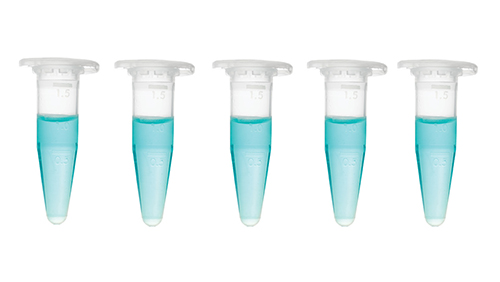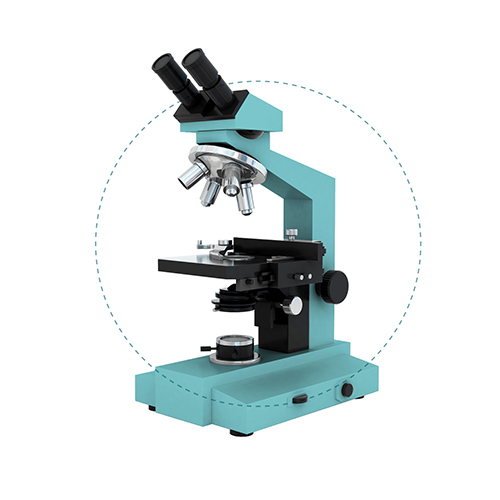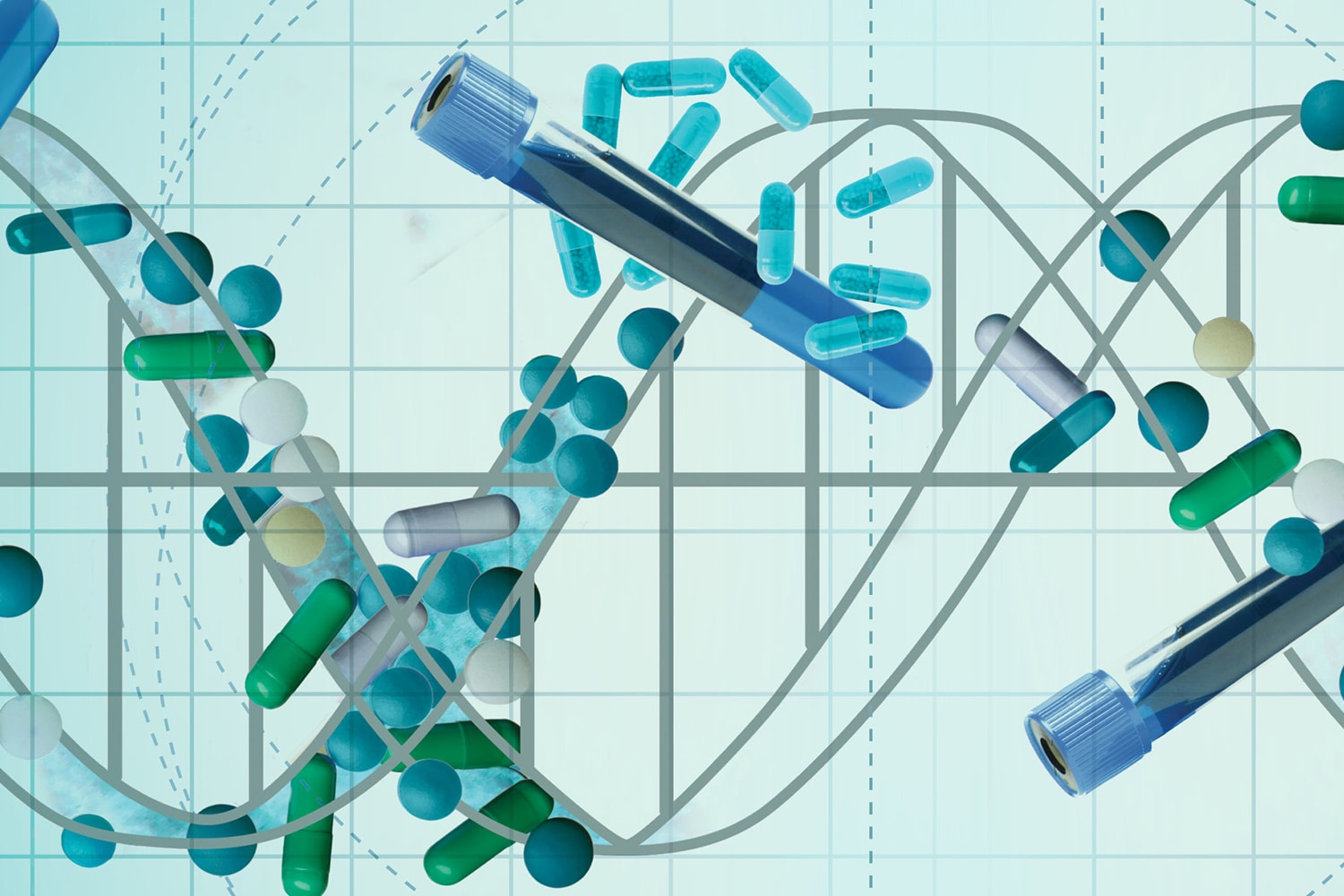WHEN THERESE BEVERS was a physician in residency at the University of Texas Health Science Center at San Antonio in the 1980s, she would order standard blood panels for her patients. At the time, doctors would note high cholesterol as a risk factor for heart disease and counsel their patients to eat healthier and keep their weight down. But they could offer little else. Then, in 1987, the U.S. Food and Drug Administration (FDA) approved the first commercial statin, lovastatin. Since then, studies have shown that by lowering cholesterol, statins reduce the overall frequency of heart attacks by approximately 25 to 30 percent.
“Clearly the cardiology field is decades ahead [of oncology] in learning to impact risk factors and decrease overall risk development,” says Bevers, who has been the medical director of the Lyda Hill Cancer Prevention Center at the University of Texas M.D. Anderson Cancer Center in Houston since it opened in 1996.
Traditionally, cancer prevention has meant reducing risk through lifestyle choices such as healthy eating, using sunscreen or not smoking. But researchers and physicians like Bevers are working toward being able to recommend preventive treatments based on patients’ individual genetic profiles and other factors that may predispose them to cancer.
Prevention in Practice
In some cases, physicians are already able to prescribe personalized interventions for those at high risk of developing cancer. For example, physicians know that from 45 to 65 percent of women who inherit mutations in the BRCA1 or BRCA2 genes will go on to develop breast cancer by age 70. Between 11 and 17 percent of women with the BRCA2 mutation and 39 percent with the BRCA1 mutation will develop ovarian cancer by age 70. (By comparison, 12 percent of women in the general population will develop breast cancer in their lifetime, and 1.3 percent of women will develop ovarian cancer.)

Photo by iStock/chromatos
Women with BRCA mutations, particularly if they are in their childbearing years, may decide to undergo increased screening to monitor their status and catch breast cancer as early as possible if it arises. Others undergo risk-reducing surgery to remove their breasts, fallopian tubes or ovaries. Since some tissue remains, surgery does not eliminate the chances of developing ovarian or breast cancer. But women who have one of these mutations and undergo a double mastectomy can reduce their risk of developing breast cancer by 95 percent. Removing both ovaries and fallopian tubes can reduce a woman’s risk of developing ovarian cancer by 90 percent.
“For those people [with these genetic mutations], the interventions might be a little more dramatic because the risks are more dramatic, but at least we can identify these patients now,” says oncologist Judy Garber, director of the Center for Cancer Genetics and Prevention at the Dana-Farber Cancer Institute in Boston. “That’s a great thing, but we still have a lot of work to do.”
Certain types of benign breast lesions, such as atypical hyperplasia and lobular carcinoma in situ, also increase a woman’s chances of developing breast cancer. Of these two types of breast disease, atypical hyperplasia is slightly more common, showing up in 10 percent of benign biopsies. Research indicates that approximately 30 percent of women diagnosed with atypical hyperplasia, characterized by abnormal growth in cells that contain some but not all the features of cancer, develop breast cancer in 25 years of follow-up. In other studies of women with this condition, taking selective estrogen receptor modulators (SERMs) such as tamoxifen and raloxifene, which work by blocking the estrogen in breast cells, reduced the risk of developing breast cancer by 41 to 79 percent.
Kathy Gahm of Houston is one of Bevers’ patients. She learned she had atypical hyperplasia in 2015 after a breast biopsy. Gahm, now 59, had two immediate family members with hormone-related cancers: Her sister had been diagnosed with stage III breast cancer in 2006 at age 57 and their mother, who tested negative for the BRCA1 and BRCA2 mutations, was diagnosed with stage IIIC ovarian cancer in 2005 at age 83. Gahm’s family history and benign breast disease diagnosis increased her risk of developing breast cancer. She agreed to take tamoxifen for five years to reduce her breast cancer risk.
“I wanted to make sure that I was taking proactive steps rather than reacting to a diagnosis in a few years,” says Gahm. “I want to drive the bus. I don’t want the bus driving me.”
Although cancer cannot always be prevented, several habits can help cut the chances of getting the disease.
by Marci A. Landsmann
Don’t start smoking or quit now. Smoking rates have come down among U.S. adults—from 42 percent in 1965 to 15 percent in 2015—but cigarette smoking is still linked to 480,000 deaths a year, and smokers die on average 10 years earlier than nonsmokers. “The data show that if you really want to have the biggest impact on reducing cancer rates, you should eliminate tobacco,” says Judy Garber, an oncologist at the Center for Cancer Genetics and Prevention at Dana-Farber Cancer Institute in Boston.
Maintain a healthy weight. Excess body weight may be linked to as many as one in five cancer deaths and is associated with at least 13 cancer types, including breast, colorectal, uterine, esophageal, gallbladder and pancreatic cancer. The American Institute for Cancer Research (AICR)—a nonprofit organization that publishes research-based diet, lifestyle and exercise recommendations to reduce cancer risk—states that maintaining a healthy weight is the most important way to protect against cancer, aside from not smoking.
Eat a commonsense healthy diet. Studies haven’t conclusively shown a link between vegetable and fruit intake and reduced risk of cancer development, but a plant-based diet that centers on low-calorie and fiber-dense nutrient sources can help contribute to keeping weight in healthy ranges. On the other hand, eating processed meats—such as hot dogs, ham, bacon, sausages and some lunch meats—can increase the risk of colorectal cancer, and red meat consumption can increase the risk of developing colorectal cancer and possibly prostate and pancreatic cancer, according to the AICR.
Exercise regularly. Using data pooled from 1.4 million people, a study published in the June 2016 JAMA Internal Medicine suggests that those who took part in physical activity that was comparable to the American Cancer Society’s recommended 150 minutes of moderate-intensity exercise weekly had a reduced risk of 13 cancers, including colon, breast, endometrial, liver and kidney cancer, as well as esophageal adenocarcinoma, myeloid leukemia and cancer of the gastric cardia.
Limit alcohol. Heavy drinking has been associated with breast, colorectal, esophageal, liver, and head and neck cancers. Recent research shows that even small amounts of alcohol (measured at one drink a day) may also increase risk for colorectal cancer and breast cancer.
Protect yourself from ultraviolet light. Skin cancer is the most common cancer in the U.S. Melanoma, an aggressive skin cancer estimated to have killed more than 10,000 Americans in 2016, is on the rise, especially among people under 40. Perhaps contributing to this jump among younger Americans: About one in three white women between ages 18 and 25 have used indoor tanning beds.
Follow age-appropriate screening recommendations. In some cases, screening doesn’t just detect potential tumors earlier—it can prevent cancer altogether. For example, physicians can detect and remove precancerous polyps during colonoscopies. Still, a 2013 study of data from the National Health Interview Survey suggested just 61 percent of Americans between 50 and 75 had adhered to colorectal cancer screening guidelines.
Get vaccinated. Each year in the U.S., more than 30,000 women and men are diagnosed with a cancer related to human papillomavirus, the most common sexually transmitted infection. More than 12,800 American women will be diagnosed with cervical cancer in 2017 and 4,200 will likely die from the disease. HPV also is linked to throat, vaginal, vulvar, anal and penile cancer. Adolescents can protect themselves from many of these HPV-related cancers by getting vaccinated before they become sexually active.
Making Prevention More Precise
In an attempt to keep more patients in the driver’s seat, scientists are taking a closer look at high-risk patients to better understand how cancer develops and what treatments might help to prevent it. “We think of cancer as being a thing that appears once it is diagnosed. But in fact, it’s a process that leads to the development of what you find on the scan as cancer,” says medical oncologist Eva Szabo of the National Cancer Institute (NCI) Division of Cancer Prevention in Rockville, Maryland. “We’ve been really focusing on treating that cancer, but the 20 to 40 years before you have the identifiable invasive cancer, that’s the premalignancy. And that absolutely is, I think, one of the most important things to focus on in cancer prevention.”
Premalignant lesions are characterized by abnormal cells that have the potential to develop into cancer. By using genetic analysis to compare and contrast both premalignant and malignant tissue, scientists are hoping to understand the molecular processes that give rise to cancer.

Photo by iStock/urfinguss
“We have these tools that can tell us what’s going on biologically,” says Szabo, referring to next-generation sequencing that can characterize tissues down to a single cell. “If we understand what’s going on at a genomic and other ‘omic’ levels, then maybe we can retroactively design interventions to disrupt the processes that lead to invasive cancer.”
In 1953 otolaryngologist Danely Slaughter observed microscopic abnormalities in tissues adjacent to oral squamous cell carcinoma tumors. Noting that this type of oral cancer often recurs or gives rise to new types of cancer even after surgery, Slaughter proposed that normal-appearing tissue adjacent to tumors could harbor some invisible features of cancer. Slaughter’s idea, coined “field cancerization,” remains an interesting one for scientists, who continue to test and apply the concept to other types of cancer, including colorectal, prostate, lung, stomach, breast and bladder cancers. These cancers appear to have surrounding fields of acquired genetic alterations that could help predict cancer risk and be targeted with drugs in people who have not developed cancer.
As an example of this idea in practice, a technology currently in clinical trials is able to analyze samples of healthy tissue in the upper airways to distinguish between malignant and nonmalignant lesions deep in the lungs. When used with a bronchoscopy, a minimally invasive method for assessing lung nodules, the Percepta Bronchial Genome Classifier was able to correctly classify lesions as cancerous 97 percent of the time compared with bronchoscopy alone, which accurately classified tumors 75 percent of the time. “Now, this is a diagnostic test, but the long-term goal would be to take a swab of the nose or mouth and determine if the person is going to develop cancer five years from now,” says pulmonologist Avrum Spira, director of the Boston University-Boston Medical Center Cancer Center, who helped develop this technology.
Many benign lesions, including those found with screening methods such as mammograms, colonoscopies and computed tomography (CT) scans, do not go on to become malignant, which poses a unique challenge for studying premalignancy. “The real key is determining the genetic, epigenetic or molecular signatures that distinguish those lesions that have the potential to progress from those that are likely to remain benign indefinitely, and that is an extremely important question,” says cancer biologist Emily Greenspan, program director of the National Cancer Institute’s Provocative Questions Initiative.
To help provide the answer, some researchers point to a larger initiative that would be similar to The Cancer Genome Atlas (TCGA), which provided a map of key genomic changes in 33 types of cancer. This effort, launched in 2006 by the National Cancer Institute and the National Human Genome Research Institute, has allowed physicians to more accurately determine cancer prognosis and to prescribe targeted treatments for patients with cancer.
“There are a few places where there has been substantial effort [in studying premalignancy], but nothing has really been funded like the TCGA, which looked at advanced cancers. A similar effort to look at precancers is really what’s needed,” says epidemiologist and oncologist Ernest Hawk, who is the vice president for Cancer Prevention and Population Sciences at the University of Texas M.D. Anderson Cancer Center.
Efforts to study premalignancy would call for far more coordination than the TCGA needed, since it would require not only analyzing tissue samples, but also understanding outside factors such as immune system function. Researchers would also need to follow up with patients to determine which genetic abnormalities advance to cancer, says Szabo of the NCI. Just because you find a genetic abnormality doesn’t mean it causes cancer down the road, she points out.
“Prevention in that way, I think, is no different from treatment or anything else about cancer. You make small incremental steps forward before you have a leap,” says Garber of Dana-Farber Cancer Institute. “It’s going to take a long time and a lot of people. That doesn’t mean you don’t do it. That just means you’ve got to really roll up your sleeves and find a way to get it done.”
Scientists may be inching a step closer to reaching these goals. In September 2016, the National Cancer Moonshot Blue Ribbon Panel issued 10 recommendations to accelerate progress against cancer. Among the suggestions was a plan for a Pre-Cancer Genome Atlas (PCGA) for germline mutation carriers (those who have a genetic predisposition such as BRCA1 and BRCA2). Patients who carry a germline mutation related to a particular cancer have a greater risk of being diagnosed with that cancer. Therefore, screening and close follow-up can provide an opportunity for researchers to study how seemingly healthy tissue transforms into cancer.
“I think the Moonshot is now putting some resources behind prevention,” says Spira. “There has been a lot of hammering out of how to kick-start this field of prevention, how to generate some excitement. The PCGA will allow development of better drugs in a preventive setting that we currently lack, so that’s the hope, and it remains to be seen if we’ll get there.”
Cancer Today magazine is free to cancer patients, survivors and caregivers who live in the U.S. Subscribe here to receive four issues per year.





